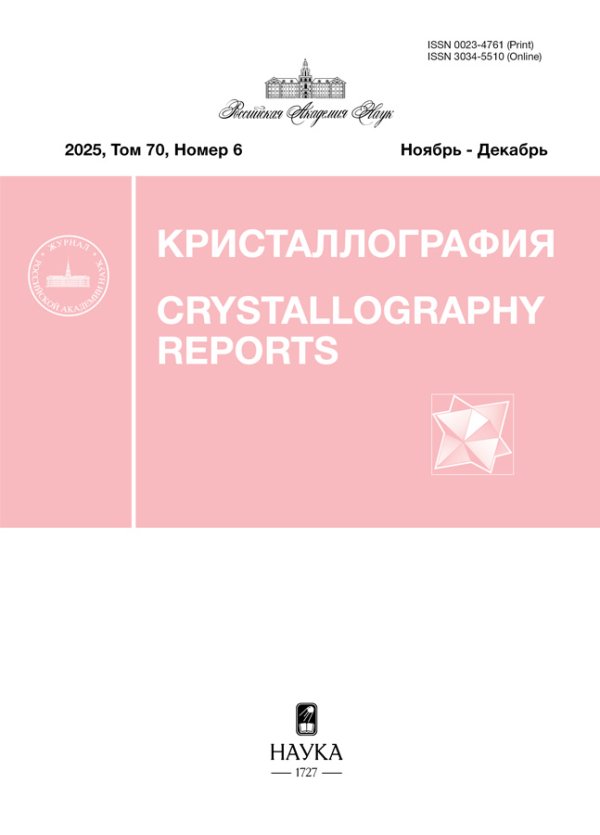Structural Study of the Light-Harvesting Complex LH2 from the Purple Sulfur Bacteria Ectothiorhodospira haloalkaliphila by Cryoelectronic Microscopy
- Authors: Burtseva A.D.1, Baymukhametov T.N.2, Ilyasov I.O.1, Bolshakov M.A.3, Moskalenko A.A.3, Boyko K.M.1, Ashikhmin A.A.3
-
Affiliations:
- Bach Institute of Biochemistry, Federal Research Center “Fundamentals of Biotechnology” of the Russian Academy of Sciences, 117071, Moscow, Russia
- National Research Centre “Kurchatov Institute”, 123182, Moscow, Russia
- Institute of Basic Biological Problems, Russian Academy of Sciences, Federal Research Center “Pushchino Scientific Center for Biological Research” of the Russian Academy of Sciences, Pushchino, Russia
- Issue: Vol 68, No 6 (2023)
- Pages: 881-887
- Section: STRUCTURE OF MACROMOLECULAR COMPOUNDS
- URL: https://journals.rcsi.science/0023-4761/article/view/231813
- DOI: https://doi.org/10.31857/S0023476123600829
- EDN: https://elibrary.ru/GBGIUU
- ID: 231813
Cite item
Full Text
Abstract
The primary processes of photosynthesis for purple photosynthesising bacteria occur in light-harvesting (LH) complexes. The LH2 complex contains polypeptides; bacteriochlorophyll; and, in most cases, carotenoids. There are three known spatial structures of LH2 complexes from purple nonsulfur bacteria; however, high-resolution structures have not been established for purple sulfur bacteria. The results of the structural study of two light-harvesting complexes LH2 from purple sulfur bacteria Ectothiorhodospira haloalkaliphila by cryoelectronic microscopy are reported. Images of carotenoid-containing (LH2+) and carotenoidless (LH2–) variants of the complex, demonstrating a characteristic architecture of the objects of this type, are obtained. A 3D reconstruction of LH2+ is performed with a resolution of 4.5 Å; it coincides with the previously established crystal structure. The presence of particles of different morphology is shown for LH2–.
About the authors
A. D. Burtseva
Bach Institute of Biochemistry, Federal Research Center “Fundamentals of Biotechnology” of the Russian Academy of Sciences, 117071, Moscow, Russia
Email: kmb@inbi.ras.ru
Россия, Москва
T. N. Baymukhametov
National Research Centre “Kurchatov Institute”, 123182, Moscow, Russia
Email: kmb@inbi.ras.ru
Россия, Москва
I. O. Ilyasov
Bach Institute of Biochemistry, Federal Research Center “Fundamentals of Biotechnology” of the Russian Academy of Sciences, 117071, Moscow, Russia
Email: kmb@inbi.ras.ru
Россия, Москва
M. A. Bolshakov
Institute of Basic Biological Problems, Russian Academy of Sciences, Federal Research Center “Pushchino Scientific Center for Biological Research” of the Russian Academy of Sciences, Pushchino, Russia
Email: kmb@inbi.ras.ru
Россия, Пущино
A. A. Moskalenko
Institute of Basic Biological Problems, Russian Academy of Sciences, Federal Research Center “Pushchino Scientific Center for Biological Research” of the Russian Academy of Sciences, Pushchino, Russia
Email: kmb@inbi.ras.ru
Россия, Пущино
K. M. Boyko
Bach Institute of Biochemistry, Federal Research Center “Fundamentals of Biotechnology” of the Russian Academy of Sciences, 117071, Moscow, Russia
Email: boiko_konstantin@inbi.ras.ru
Россия, Москва
A. A. Ashikhmin
Institute of Basic Biological Problems, Russian Academy of Sciences, Federal Research Center “Pushchino Scientific Center for Biological Research” of the Russian Academy of Sciences, Pushchino, Russia
Author for correspondence.
Email: kmb@inbi.ras.ru
Россия, Пущино
References
- McDermott G. et al. // Nature. 1995. V. 374. P. 517. https://doi.org/10.1038/374517a0
- Zuber H., Cogdell R.J. // Anoxygenic Photosynthetic Bacteria. Dordrecht: Kluwer Academic Publishers, 2004. V. 2. P. 315. https://doi.org/10.1007/0-306-47954-0_16
- Bahatyrova S. et al. // Nature. 2004. V. 430. P. 1058. https://doi.org/10.1038/nature02823
- Cogdell R.J. et al. // Quart. Rev. Biophys. 2006. V. 39. P. 227. https://doi.org/10.1017/S0033583506004434
- Gabrielsen M. et al. // The Purple Phototrophic Bacteria. Dordrecht: Springer Netherlands, 2009. V. 28. P. 135. https://doi.org/10.1007/978-1-4020-8815-5_8
- Moskalenko A.A., Karapetyan N.V. // Z. Naturforsch. C. 1996. B. 51. S. 763. https://doi.org/10.1515/znc-1996-11-1201
- Scheer H. // Chlorophylls and Bacteriochlorophylls. Dordrecht: Springer Netherlands, 2006. V. 25. P. 1–26. https://doi.org/10.1007/1-4020-4516-6_1
- Polyakov N.E., Leshina T.V. // Russ. Chem. Rev. 2006. V. 75. P. 1049. https://doi.org/10.1070/RC2006v075n12ABEH003640
- Theiss C. et al. // Biophys. J. 2008. V. 94. P. 4808. https://doi.org/10.1529/biophysj.107.121681
- Telfer A. et al. // Carotenoids. Basel: Birkhäuser Basel, 2008. V. 4. P. 265. https://doi.org/10.1007/978-3-7643-7499-0_14
- Frank H.A., Polívka T. // The Purple Phototrophic Bacteria. Dordrecht: Springer Netherlands, 2009. V. 28. P. 213. https://doi.org/10.1007/978-1-4020-8815-5_12
- Koepke J. et al. // Structure. 1996. V. 4. P. 581. https://doi.org/10.1016/S0969-2126(96)00063-9
- Papiz M.Z. et al. // J. Mol. Biol. 2003. V. 326. P. 1523. https://doi.org/10.1016/S0022-2836(03)00024-X
- Leiger K. et al. // J. Phys. Chem. B. 2019. V. 123. P. 29. https://doi.org/10.1021/acs.jpcb.8b08083
- Ашихмин А.А. и др. // Докл. РАН. 2013. Т. 453. С. 563. https://doi.org/10.7868/S0869565213350235
- Ashikhmin A. et al. // Photosynth. Res. 2014. V. 119. P. 291. https://doi.org/10.1007/s11120-013-9947-6
- Imhoff J.F. // Anoxygenic phototrophic bacteria, in: B. Austin (Ed.), Methods in Aquatic Bacteriology. Chichester: Wiley, 1988. 1988. P. 425. https://doi.org/10.1017/S0025315400043393
- Punjani A. et al. // Nat Methods. 2017. V. 14. P. 290. https://doi.org/10.1038/nmeth.4169
- Zheng S.Q. et al. // Nat Methods. 2017. V. 14. P. 331. https://doi.org/10.1038/nmeth.4193
- Punjani A. et al. // Nat Methods. 2020. V. 17. P. 1214. https://doi.org/10.1038/s41592-020-00990-8
- Pettersen E.F. et al. // J. Comput. Chem. 2004. V. 25. P. 1605. https://doi.org/10.1002/jcc.20084
- Gardiner A.T. et al. // Sci. Adv. 2021. V. 7. P. eabe4650. https://doi.org/10.1126/sciadv.abe4650
Supplementary files
















